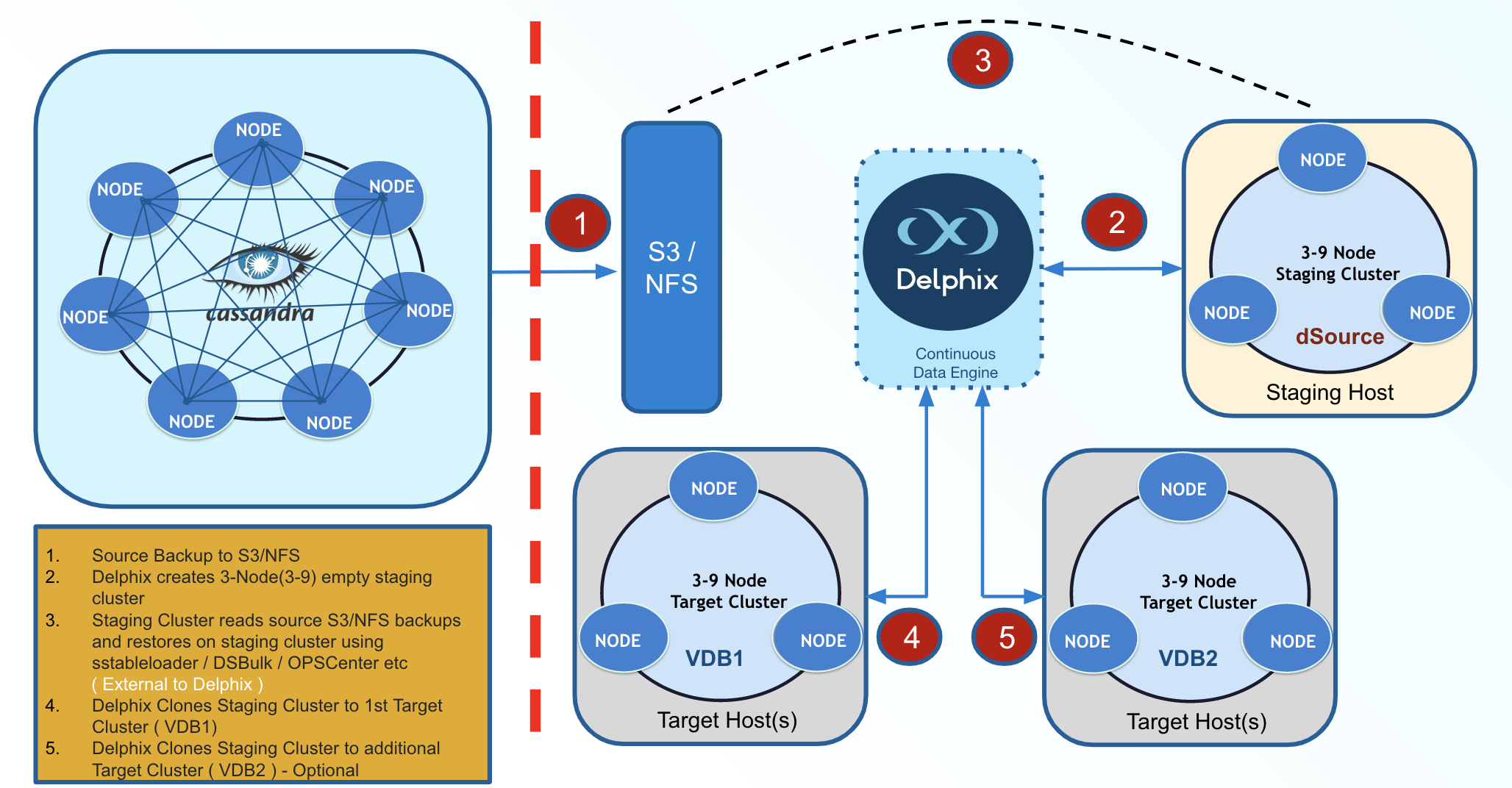Cassandra Architecture
Overview
This article contains an overview of how Delphix works with Cassandra deployments.
There are three key concepts when using Delphix with any data platform:
-
Environments: The server and software required to run a data set. For Cassandra, this will be an operating system host with Cassandra cluster running on it.
- Staging Environment: Source data is ingested into Delphix using Staging Host. These will be used to create dSources.
- Target Environment: Target hosts to provision VDBs. These environment need Cassandra installations that correspond to the versions of the Source environments, per our Cassandra Support Matrix
-
dSources: A database that the Delphix Virtualization Engine uses to create and update virtual copies of your database. A dSource is a virtualized representation of a physical or logical source database.
-
VDBs: A database provisioned from either a dSource or another VDB which is a copy of the source data. Once a VDB has been provisioned to a target environment, you can also create a snapshot policy for that VDB, to capture changes within it as if it were any other logical or physical database.
Environment Linking and Provisioning Architecture
As shown in the diagram below Delphix will first create an empty staging Cassandra Cluster. Once the dSource is created, customer can ingest or push data using their exiting backup/restore automations to the staging cluster. Once you have added an environment (Staging / Target), Delphix will automatically discover Cassandra binaries.
